 W
WThe Acropolis Museum is an archaeological museum focused on the findings of the archaeological site of the Acropolis of Athens. The museum was built to house every artifact found on the rock and on the surrounding slopes, from the Greek Bronze Age to Roman and Byzantine Greece. It also lies over the ruins of a part of Roman and early Byzantine Athens.
 W
WThe Acropolis of Athens is an ancient citadel located on a rocky outcrop above the city of Athens and contains the remains of several ancient buildings of great architectural and historical significance, the most famous being the Parthenon. The word acropolis is from the Greek words ἄκρον and πόλις. The term acropolis is generic and there are many other acropoleis in Greece. During ancient times it was known also more properly as Cecropia, after the legendary serpent-man, Cecrops, the supposed first Athenian king.
 W
WThe Adonia was a festival celebrated annually by women in ancient Greece to mourn the death of Adonis, the consort of Aphrodite. It is best attested in classical Athens, though other sources provide evidence for the ritual mourning of Adonis elsewhere in the Greek world, including Hellenistic Alexandria and Argos in the second century AD.
 W
WAncient furniture was made of many different materials, including reeds, wood, stone, metals, straws, and ivory. Some civilizations used inlay or they carved images of mythological creatures and constellations into their furniture. Occasionally furniture would be inlaid into a certain shape. For example, the game Mehen was played on a table inlaid into the shape of a snake. Inlays were also used to ornament shapes. Chairs would be stylized with metals, finials, inlays, or upholstery. It was a common practice for the legs of furniture to be shaped like animal legs and use mortise and tenon joints. Lacquerware and Ivory carving were also common.
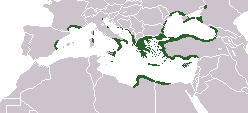 W
WThe influence of wine in ancient Greece helped ancient Greece trade with neighboring countries and regions. Many mannerisms and cultural aspects were associated with wine. It led to great change in Ancient Greece as well.The peoples of the Mediterranean began to emerge from barbarism when they learned to cultivate the olive and the vine.
 W
WAzoria is an archaeological site on a double-peaked hill overlooking the Gulf of Mirabello in eastern Crete in the Greek Aegean. "Azoria" is a local toponym, not apparently an ancient place name or epigraphically-attested Greek city.
 W
WA caryatid is a sculpted female figure serving as an architectural support taking the place of a column or a pillar supporting an entablature on her head. The Greek term karyatides literally means "maidens of Karyai", an ancient town on the Peloponnese. Karyai had a temple dedicated to the goddess Artemis in her aspect of Artemis Karyatis: "As Karyatis she rejoiced in the dances of the nut-tree village of Karyai, those Karyatides, who in their ecstatic round-dance carried on their heads baskets of live reeds, as if they were dancing plants".
 W
WA chaplet is a headdress in the form of a wreath made of leaves, flowers or twigs woven into a ring. It is typically worn in festive occasions and on holy days. In ancient times it also served as a crown representing victory or authority.
 W
WChthonic literally means "subterranean", but the word in English describes deities or spirits of the underworld, especially in the Ancient Greek religion. The Greek word khthon is one of several for "earth"; it typically refers to that which is under the earth, rather than the living surface of the land, or the land as territory.
 W
WA corolla is an ancient headdress in the form of a small circlet or crown. Usually it has ceremonial significance and represents victory or authority.
 W
WDoric or Dorian was an Ancient Greek dialect. Its variants were spoken in the southern and eastern Peloponnese as well as in Sicily, Epirus, Southern Italy, Crete, Rhodes, some islands in the southern Aegean Sea and some cities on the south east coast of Anatolia. Together with Northwest Greek, it forms the "Western group" of classical Greek dialects. By Hellenistic times, under the Achaean League, an Achaean-Doric koiné language appeared, exhibiting many peculiarities common to all Doric dialects, which delayed the spread of the Attic-based Koine Greek to the Peloponnese until the 2nd century BC. The only living descendant of Doric is the Tsakonian language which is still spoken in Greece today; though critically endangered, with only a few hundred – mostly elderly – fluent speakers left.
 W
WEpiphanies – or visions of gods – were reported and believed in many cities of ancient Greece. They were most commonly reported on the battlefields and, during moments of crisis, when citizens were most eager to believe that the gods of their polis were coming to assist them. An alleged visitation or manifestation of a god was known as an epiphaneia. Sometimes the gods who appeared were prominent deities, but more often, they were minor figures, whose shrines were linked to the location of a particular event or battle. The gods did not always reveal themselves to mortals, but could indicate their presence through physical signs or unusual phenomena. They could also appear to individuals, particularly in dreams, such as the reported visit by the ‘Mother of the Gods’ to Themistokles who warned of an attempt on his life and, in return for this information, demanded that his daughter be sworn into her service.
 W
WGlory is high renown, praise, and honor obtained by notable achievements, and based in extensive common consent. In Greek culture fame and glory were highly considered, as it is explained in The Symposium, one of Plato's dialogs.
 W
WGreece played a crucial role in the transmission of classical knowledge to the Islamic world and to Renaissance Italy, and also in the transmission of medieval Arabic science to Renaissance Italy. Its rich historiographical tradition preserved Ancient Greek knowledge upon which Islamic art, architecture, literature, philosophy and technological achievements were built. Ibn Khaldun once noted; The sciences of only one nation, the Greeks, have come down to us, because they were translated through Al-Ma'mun's efforts. He was successful in this direction because he had many translators at his disposal and spent much money in this connection.
 W
WGreek divination is the divination practiced by ancient Greek culture as it is known from ancient Greek literature, supplemented by epigraphic and pictorial evidence. Divination is a traditional set of methods of consulting divinity to obtain prophecies (theopropia) about specific circumstances defined beforehand. As it is a form of compelling divinity to reveal its will by the application of method, it is, and has been since classical times, considered a type of magic. Cicero condemns it as superstition. It depends on a presumed "sympathy" between the mantic event and the real circumstance, which he denies as contrary to the laws of nature. If there were any sympathy, and the diviner could discover it, then "men may approach very near to the power of gods."
 W
WIn the earliest times the Greeks wore their κόμη long, and thus Homer constantly calls them κᾰρηκομόωντες (long-haired).
 W
WHairstyle fashion in Rome was ever changing, and particularly in the Roman Imperial Period there were a number of different ways to style hair. As with clothes, there were several hairstyles that were limited to certain people in ancient society. Styles are so distinctive they allow scholars today to create a chronology of Roman portraiture and art; we are able to date pictures of the empresses on coins, or identify busts depending on their hairstyles.
 W
WHellenization or Hellenism is the historical spread of ancient Greek culture, religion, and, to a lesser extent, language, over foreign peoples conquered by Greeks or brought into their sphere of influence, particularly during the Hellenistic period following the campaigns of Alexander the Great in the fourth century BC. The result of Hellenization was that elements of Greek origin combined in various forms and degrees with local elements, and these Greek influences spread from the Mediterranean basin as far east as modern-day India. In modern times, Hellenization has been associated with the adoption of modern Greek culture and the ethnic and cultural homogenization of Greece.
 W
WHospitium is the ancient Greco-Roman concept of hospitality as a divine right of the guest and a divine duty of the host. Similar or broadly equivalent customs were and are also known in other cultures, though not always by that name. Among the Greeks and Romans, hospitium was of a twofold character: private and public.
 W
WThe Kanephoros was an honorific office given to unmarried young women in ancient Greece, which involved the privilege of leading the procession to sacrifice at festivals; the highest honour was to lead the pompe (πομπή) at the Panathenaic Festival. The role was given to a virgin selected from amongst the aristocratic or Eupatrid families of Athens whose purity and youth was thought essential to ensure a successful sacrifice. Her task was to carry a basket or kanoun (κανοῦν), which contained the offering of barley or first fruits, the sacrificial knife and fillets to decorate the bull, in procession through the city up to the altar on the acropolis.
 W
WA klismos or klismos chair is a type of ancient Greek chair, with curved backrest and tapering, outcurved legs.
 W
WKottabos was a game of skill played at Ancient Greek and Etruscan symposia, especially in the 6th and 5th centuries BC. It involved flinging wine-lees (sediment) at a target in the middle of the room. The winner would receive a prize, comprising cakes, sweetmeats, or kisses.
 W
WAncient Greek literature is literature written in the Ancient Greek language from the earliest texts until the time of the Byzantine Empire. The earliest surviving works of ancient Greek literature, dating back to the early Archaic period, are the two epic poems the Iliad and the Odyssey, set in an idealized archaic past today identified as having some relation to the Mycenaean era. These two epics, along with the Homeric Hymns and the two poems of Hesiod, Theogony and Works and Days, comprised the major foundations of the Greek literary tradition that would continue into the Classical, Hellenistic, and Roman periods.
 W
WThe liturgy was in ancient Greece a public service established by the city-state whereby its richest members, more or less voluntarily, financed the State with their personal wealth. It took its legitimacy from the idea that "personal wealth is possessed only through delegation from the city". The liturgical system dates back to the early days of Athenian democracy, but gradually fell into disuse by the end of the 4th century BC, eclipsed by the development of Euergetism in the Hellenistic period. However, a similar system was in force during the Roman empire.
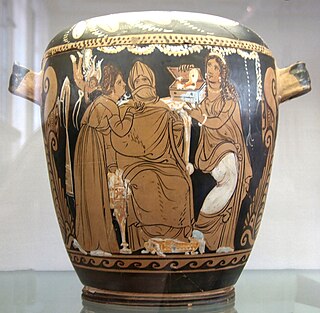 W
WMarriage in ancient Greece had less of a basis in personal relationships and more in social responsibility. The goal and focus of all marriages was intended to be reproduction, making marriage an issue of public interest. Marriages were usually arranged by the parents; on occasion professional matchmakers were used. Each city was politically independent and each had its own laws concerning marriage. For the marriage to be legal, the woman's father or guardian gave permission to a suitable male who could afford to marry. Orphaned daughters were usually married to uncles or cousins. Wintertime marriages were popular due to the significance of that time to Hera, the goddess of marriage. The couple participated in a ceremony which included rituals such as veil removal, but it was the couple living together that made the marriage legal. Marriage was understood to be the official transition from childhood into adulthood for females.
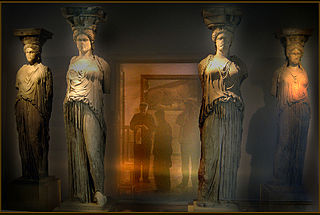 W
WThe Old Acropolis Museum was an archaeological museum located in Athens, Greece on the archeological site of Acropolis. It is built in a niche at the eastern edge of the rock and most of it lies beneath the level of the hilltop, making it largely invisible. It was considered one of the major archaeological museums in Athens. Due to its limited size, the Greek government decided in the late 1980s to build a new museum. The New Acropolis Museum is now built at the foot of the Acropolis. In June 2007 the old museum closed its doors so that its antiquities could be moved to their new home, which opened on 20 June 2009.
 W
WThe Temple of Olympian Zeus, also known as the Olympieion or Columns of the Olympian Zeus, is a former colossal temple at the center of the Greek capital Athens. It was dedicated to "Olympian" Zeus, a name originating from his position as head of the Olympian gods. Construction began in the 6th century BC during the rule of the Athenian tyrants, who envisaged building the greatest temple in the ancient world, but it was not completed until the reign of the Roman Emperor Hadrian in the 2nd century AD, some 638 years after the project had begun. During the Roman period the temple, which included 104 colossal columns, was renowned as the largest temple in Greece and housed one of the largest cult statues in the ancient world.
 W
WIn the culture of ancient Greece and later of the Greco-Roman world at large, the term paideia referred to the rearing and education of the ideal member of the polis or state. It incorporated both practical, subject-based schooling and a focus upon the socialization of individuals within the aristocratic order of the polis. The practical aspects of this education included subjects subsumed under the modern designation of the liberal arts, as well as scientific disciplines like arithmetic and medicine. An ideal and successful member of the polis would possess intellectual, moral and physical refinement, so training in gymnastics and wrestling was valued for its effect on the body alongside the moral education which the Greeks believed was imparted by the study of music, poetry, and philosophy. This approach to the rearing of a well-rounded Greek male was common to the Greek-speaking world, with the exception of Sparta where a rigid and militaristic form of education known as the agoge was practiced.
 W
WPlutarch's Lives of the Noble Greeks and Romans, commonly called Parallel Lives or Plutarch's Lives, is a series of 48 biographies of famous men, arranged in pairs to illuminate their common moral virtues or failings, probably written at the beginning of the second century AD. The surviving Parallel Lives comprises 23 pairs of biographies, each pair consisting of one Greek and one Roman of similar destiny, such as Alexander the Great and Julius Caesar, or Demosthenes and Cicero. It is a work of considerable importance, not only as a source of information about the individuals described, but also about the times in which they lived.
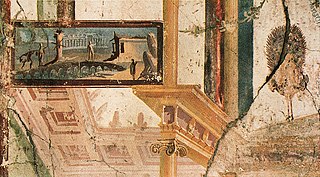 W
WIn the modern study of the culture of ancient Greece and Magna Graecia, a pinax (πίναξ), meaning "board", is a votive tablet of painted wood, or terracotta, marble or bronze relief that served as a votive object deposited in a sanctuary or as a memorial affixed within a burial chamber. Such pinakes feature in the classical collections of most comprehensive museums.
 W
WIn ancient Greek architecture, a propylaea, propylea or propylaia is a monumental gateway. The prototypical Greek example is the propylaea that serves as the entrance to the Acropolis of Athens. The Greek Revival Brandenburg Gate of Berlin and the Propylaea in Munich both evoke the central portion of the Athens propylaea.
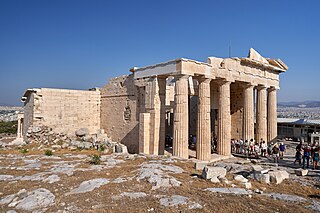 W
WThe Propylaea was the monumental gateway to the Acropolis of Athens, and was one of several public works commissioned by the Athenian leader Pericles in order to rebuild the Acropolis a generation after the conclusion of the Persian Wars. Pericles appointed his friend Phidias as the supervisor and lead architect of this massive project, which Pericles allegedly financed with funds appropriated from the treasury of the Delian League. According to Plutarch, the Propylaea was designed by the architect Mnesikles, about whom nothing else is known. Construction began in 437 BC and was terminated in 432, when the building was still unfinished.
 W
WIn ancient Greece, the symposium was a part of a banquet that took place after the meal, when drinking for pleasure was accompanied by music, dancing, recitals, or conversation. Literary works that describe or take place at a symposium include two Socratic dialogues, Plato's Symposium and Xenophon's Symposium, as well as a number of Greek poems such as the elegies of Theognis of Megara. Symposia are depicted in Greek and Etruscan art that shows similar scenes.
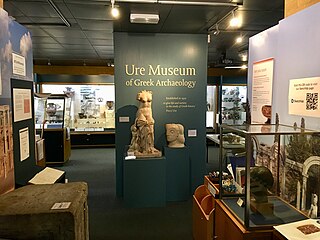 W
WThe Ure Museum of Greek Archaeology contains one of the most important collections of Greek antiquities in the United Kingdom. The Museum forms part of the Department of Classics at the University of Reading and is situated on the university's Whiteknights Campus, about 2 miles (3.2 km) from the centre of the English town of Reading, Berkshire. The museum is open to the public Tuesday to Friday and there is no admission charge.
 W
WThe Valley of the Muses was the site of an ancient Greek sanctuary to the Muses and the Mouseia festivals held in their honor. It is an open-air historical site open permanently to the public. It is located at Thespies on the eastern slopes of Mount Helicon in Boeotia, Greece.
 W
WThe Vergina Sun, also known as the Star of Vergina, Vergina Star or Argead Star, is a rayed solar symbol first appearing in ancient Greek art of the period between the 6th and 2nd centuries BC. The Vergina Sun proper has sixteen triangular rays, while comparable symbols of the same period variously have sixteen, twelve, eight or (rarely) six rays.
 W
WThe warp-weighted loom is a simple and ancient form of loom in which the warp yarns hang freely from a bar supported by upright poles which can be placed at a convenient slant against a wall. Bundles of warp threads are tied to hanging weights called loom weights which keep the threads taut. Evidence of the warp-weighted loom appears in the Neolithic period in central Europe. It is depicted in artifacts of Bronze Age Greece and was common throughout Europe, remaining in use in Scandinavia into modern times. Loom weights from the Bronze Age were excavated in Miletos, a Greek city in Anatolia.
 W
WWorry stones are smooth, polished gemstones, usually in the shape of an oval with a thumb-sized indentation, used for relaxation or anxiety relief. The smoothness of the stone is most often created naturally by running water. Worry stones are typically around 3 centimetres in size. They are used by holding the stone between the index finger and thumb and gently moving one's thumb back and forth across the stone. This action of moving one's thumb back and forth across the stone is thought to reduce stress.
 W
WXenia is an ancient Greek concept of hospitality. It is almost always translated as 'guest-friendship' or 'ritualized friendship'. It is an institutionalized relationship rooted in generosity, gift exchange, and reciprocity. Historically, hospitality towards foreigners and guests was understood as a moral obligation. Hospitality towards foreign Hellenes honored Zeus Xenios patrons of foreigners.
 W
WThe xylospongium or tersorium, also known as sponge on a stick, was a hygienic utensil used by ancient Romans to wipe their anus after defecating, consisting of a wooden stick with a sea sponge fixed at one end.